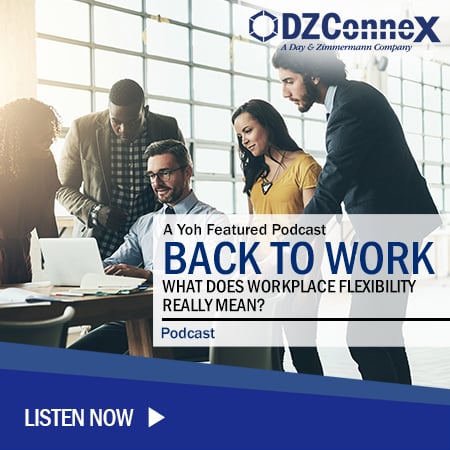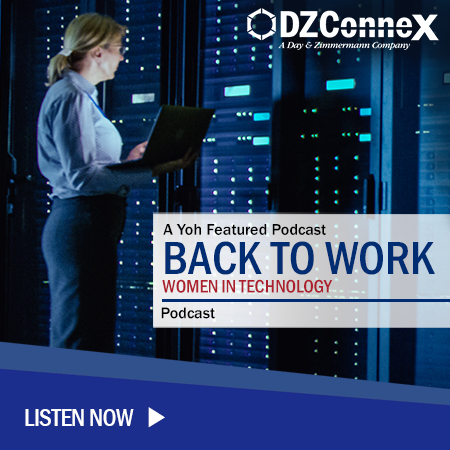Flexibility in the workplace remains top of mind for employees and their employers in 2023, nearly three years after the onset of the pandemic. The pandemic created a shift in how, when, and where Americans want to work, and this shift continues to impact organizations today. Many employees are switching to companies who provide flexible workplace opportunities to suit their individual needs if their current employer is not fostering a flexible work environment.
In this episode of our Back to Work podcast series, our host, Joe McIntyre, talks to Caroline Castrillon, the Founder and Life Coach at Corporate Escape Artist − a career coaching firm dedicated to helping corporate professionals change from soul-sucking jobs to career fulfillment. Caroline leverages her industry expertise to convey how employers need to be prioritizing flexibility in the workplace to attract and retain top talent.
Listen to our Podcast below:
Why Is Flexibility in the Workplace Important?
Simply put, flexibility in the workplace is important because employees are asking for it. A recent survey from Yoh revealed that of people who currently work remotely 100% of the time, nearly 2x as many say they prefer to remain fully remote versus those who prefer to go to a hybrid environment, and more than 10x as many as those who want to work fully in person. This makes it evident that many employees want the option to choose their work environment, and companies would benefit from accommodating this request.
Workplace flexibility benefits both employees and their employers. It reduces burnout, promotes health, wellness and morale, and reduces commuting expenses for employees. It boosts organizational productivity, can save on office space costs, and reduces absenteeism for employers – it's a win win for both parties There can also be some drawbacks like a difficulty disconnecting from work and feeling isolated, but the benefits outweigh these in the end.
How to Incorporate Flexibility Into the Workplace
Your company needs to have a strategy in place for incorporating workplace flexibility. For employers, there are several flexible work models with a great deal on momentum right now including a 4-day work week, hybrid work, 100% remote work, term work, caregiving and parental leave, etc. Employers should take advantage of these popular opportunities and introduce them across their organization so employee's needs are met and they don't leave your company for another one offering flexible advantages.
As an employee, if you're workplace standards are not being met, you should approach your employer and ask for a change. Caroline mentions in the podcast that people have three options when they are unhappy at work: they can stay, leave, or negotiate. She recommends they negotiate, and she provides expert tips on how employees should approach the negotiation.
They should start by collecting data and being clear on the company's policies. Some best practices include going into the meeting with a positive attitude, preparing a formal presentation on what you want your employer to offer in terms of flexibility, and ultimately focusing on how this can benefit your employer.
To close out the podcast, Caroline and Joe discuss their predictions on the future of work − specifically if they think hybrid and remote work will be the norm long-term. In the end, people want flexibility, fulfillment, and freedom. As long as companies are listening to their employees and meeting these needs, they will have no problem achieving functional flexibility in the workplace.







